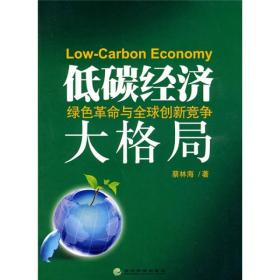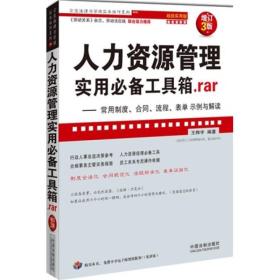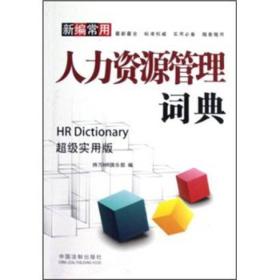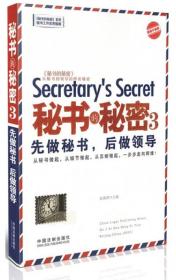
英语词汇学引论(第五版)
¥ 1.9 八五品
库存79件
江苏镇江
认证卖家担保交易快速发货售后保障
作者林承璋、刘世平 著
出版社武汉大学出版社
出版时间2016-02
版次5
装帧平装
货号9787307167018
上书时间2025-01-06
- 最新上架
商品详情
- 品相描述:八五品
图书标准信息
- 作者 林承璋、刘世平 著
- 出版社 武汉大学出版社
- 出版时间 2016-02
- 版次 5
- ISBN 9787307167018
- 定价 42.00元
- 装帧 平装
- 开本 16开
- 纸张 胶版纸
- 页数 367页
- 字数 554千字
- 丛书 高等学校英语专业系列教材
- 【内容简介】
-
本书共九章。以现代语言学理论作为指导,以英语词汇为研究对象,着重论述英语词汇的来源、发展、现状及其研究方法;分析英语词的结构、类型、意义、理据、相互关系、语义的变化方式、过程及用法;研究英国英语和美国英语的差异;还对英语习语的特点、分类、语义以及英语词典的发展和使用都作了较详尽的阐述,并提供了大量的例证。
- 【作者简介】
-
林成璋,武汉大学外国语言文学学院英语专业教授,主要研究方向为英语语言学、英国文学、美国文学,英语词汇学等。
- 【目录】
-
Chapter 1 Language, Linguistics and Lexicology 1—1—1 Introductory Remarks 1—1—2 A Definition of Language 1—1—3 Language, Society and Thought 1—2—1 A Definition of Linguistics 12—2 The Scope of Linguistics 1—3—1 What Is Lexicology? 1—3—2 Aims and Significance of the Course of English Lexicology 1—3—3 The Connection of Lexicology with Other Branches of Linguistics 1—3—4 Two Approaches to the Study of English Lexicology Chapter 2 The Sources of the English Vocabulany 2—1—1 What Is Etymology? 2—1—2 The English People and the English Language 2—1—3 The Position and Character of the English Language in the Indo—European Family 2—1—4 The Divisions of the History of the English Language 2—1—5 Some Characteristics of Old English 2—16 Some Characteristics of Middle English 2—1—7 Some Characteristics of Modern English 2—1—8 Etymological Twins in English 2—1—9 Some Combining Forms Used in Modern English 2—2—1 Words of Native Origin 2—2—2 Borrowed Words in the English Vocabulary 2—3—1 The Foreign Elements in the English Vocabulary 2—3—2 The Scandinavian Element in the English Vocabulary 2—3—3 The French Element in the English Vocabulary 2—3—4 The Latin Element in the English Vocabulary 2—3—5 The Greek Element in the English Vocabulary 2—3—6 The Influence of the Classical Elements upon the English Voca‘oulary 2—3—7 Other Foreign Elements in the English Vocabulary 2—3—8 The Interrelation Between the Native and Foreign Elements in the English Vocabulary 2—3—9 The Linguistic and Historical Origins of Some Common English Words Chapter 3 Word Meaning and Semantic Relations 3—1—1 Some General Remarks on Semantics and Meaning 3—1—2 The Relationship Between Meaning and the Object 3—2—1 What Is a Word? 3—2—2 Meaning and Motivation 3—3—1 Classifications of Words 3—3—2 Main Types of Word Meaning 3—3—3 Word Meaning and Context 3—4—1 Synonyms 3—4—2 Antonyms 3—4—3 Polysemy and Homonymy 3—4—4 Hyponymy Chapter 4 The Changing English Vocabulany 4—1—1 The Constant Change in Language and the Continuous Appearance of Neologisms 4—1—2 The Definition of Neologisms or New Words 4—1—3 The Rate of Changes of the English Vocabulary 4—1—4 The Sources of New Words 4—1—5 The Formation of Neologisms 4—2—1 Archaisms 4—3—1 Changes in Meaning 4—3—2 Four Tendencies in Semantic Changes 4—3—3 Semantic Changes from the Literal Use of Words to Their Figurative Use Chapter 5 Word— formation rn English 5—1—1 Introduction 5—1—2 Morphological Structure of Words 5—1—3 Two Types of Morphemes 5—1—4 Three Types of Words 5—1—5 Root, Base, Stem 5—2—1 The Main Processes of English Word—formation 5—2—2 The Minor Processes of English Word—formation Chapter 6 English Idioms 6—1—1 Introduction 6—1—2 The Defi_nition of Idioms 6—1—3 The Significance of Studying English Idioms 6—1—4 The Features of English Idioms 6—1—5 English Idioms in Different Styles 6—1—6 The Difference Between Idiomatic and Free Phrases 6—2—1 Classifications of English Idioms 6—2—2 Some Useful Language Areas of Idioms Chapter 7 English Collocations 7—1—1 Introduction 7—1—2 What Is a Collocation? 7—1—3 The Importance of Leaning English Collocations 7—2—1 The Classification of English Collocations 7—2—2 Register Used in English Collocations 7—3—1 Some Commonest Words Used in English Collocations 7—4—1 Different Subjects of English Collocations 7—4—2 Families 7—4—3 Houses, Flats and Rooms 7—4—4 Food and Drink 7—4—5 Study and Learning 7—4—6 Fitness and Illness 7—4—7 Job and Work 7—4—8 Computers 7—4—9 Sport 7—4—10 Time Chapter 8 British and American English 8—1—1 English as a Language of Worldwide Use 8—1—2 British and American English 8—1—3 The Historical Background of American English 8—2—1 Differences between British English and American English 8—2—2 Differences in Individual Sounds 8—2—3 Differences in Stress 8—2—4 Differences in Spelling 8—2—5 Differences in Vocabulary 8—2—6 Differences in Grammar 8—3—1 A Comparison Between Webster‘s Pronunciation Symbols ( WPS) and International Phonetic Alphabet (IPA) 8—3—2 British and American English in the Future Chapter 9 English Drctionaries and How to Use Them 9—1—1 What Is a Dictionary? 9—1—2 Characteristics of Dictionaries 9—2—1 Types of Dictionaries 9—2—2 Monolingual, Bilingual and Multilingual Dictionaries 9—2—3 General and Special Dictionaries 9—2—4 Pocket, Medium—sized and Unabridged Dictionaries 9—2—5 Synchroruc and Diachronic Dictionaries 9—2—6 Encyclopedias and Encyclopedic Dictionaries 9—2—7 The Printed and Electroruc Dictionaries 9—31 The History of English Dictionaries 9—3—2 A Brief Introduction of Five Newest English Dictionaries 9—3—3 Five Periods in the History of English Dictionaries 9—4—1 How to Use English Dictionaries Appendix 1 An English—Chinese List of Technical Terms of Lexicology Used in This Book Appendix 2 The Review of a Newest Book Bibliography
作者介绍
林成璋 ,武汉大学外国语言文学学院英语专业教授,主要研究方向为英语语言学、英国文学、美国文学,英语词汇学等。
序言
点击展开
点击收起
— 没有更多了 —












以下为对购买帮助不大的评价